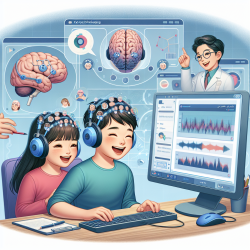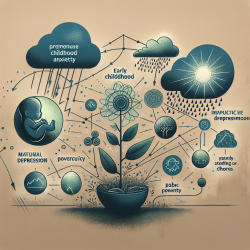Understanding the Role of BOLD Signal in Aphasia Therapy
In the ever-evolving field of speech-language pathology, data-driven decisions and evidence-based practices are crucial for achieving optimal outcomes. A recent study titled "Variability in blood oxygen level dependent (BOLD) signal in patients with stroke-induced and primary progressive aphasia" sheds light on the intricate relationship between brain hemodynamics and language function in aphasia patients. This research offers valuable insights that can help practitioners refine their therapeutic approaches.
Key Findings from the Research
The study investigated changes in the hemodynamic response function (HRF) during language-related neural activation in patients with stroke-induced aphasia (SA) and primary progressive aphasia (PPA). The research revealed several critical findings:
- In SA patients, the average HRF time to peak (TTP) was significantly delayed in the left hemisphere regions involved in naming, compared to healthy participants and PPA patients.
- There was a positive correlation between TTP delay and lesion size in SA patients, and a negative correlation with global language function.
- No significant differences were found in the HRF TTP and percent signal change (ΔS) in the right hemisphere homologues or in the occipital control regions across the three groups.
- PPA patients exhibited a normal HRF pattern, suggesting different underlying pathophysiological mechanisms compared to SA patients.
Implications for Practice
These findings underscore the importance of understanding the neurophysiological underpinnings of aphasia to tailor therapy more effectively. For practitioners, this means:
- Customized Therapy Plans: Recognizing the correlation between lesion size and HRF TTP can guide the customization of therapy plans, focusing on areas with significant hemodynamic changes.
- Monitoring Progress: Utilizing fMRI and BOLD signal measurements can serve as biomarkers for tracking recovery and adjusting interventions accordingly.
- Interdisciplinary Collaboration: Collaborating with neurologists and radiologists can enhance the understanding of each patient's unique neurophysiological profile, leading to more comprehensive care.
Encouraging Further Research
While this study provides a foundational understanding, further research is essential to explore the broader implications of HRF abnormalities in aphasia. Future studies should aim to:
- Investigate larger and more diverse patient populations to validate and expand upon these findings.
- Explore the potential of using BOLD signal variability as a predictive tool for therapy outcomes.
- Examine the effects of different therapeutic interventions on HRF and language recovery.
By continuing to bridge the gap between research and practice, we can unlock new possibilities for improving the lives of individuals with aphasia.
To read the original research paper, please follow this link: Variability in blood oxygen level dependent (BOLD) signal in patients with stroke-induced and primary progressive aphasia.










